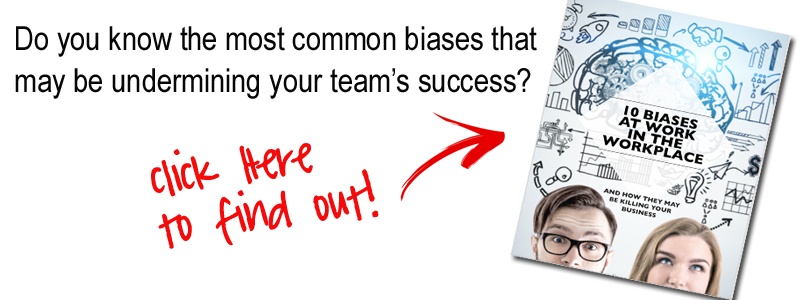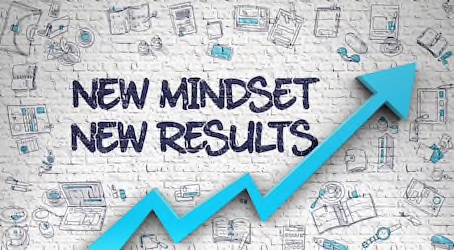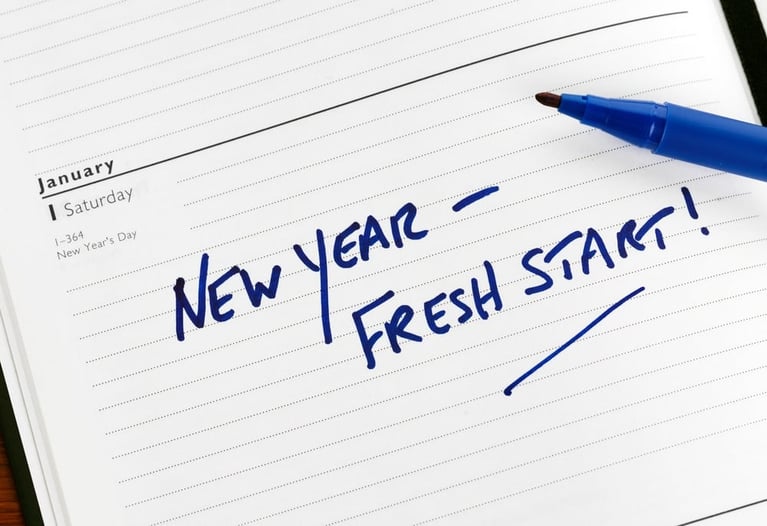Have you ever noticed that Sweet drinks generally taste sweeter if you drink them right after drinking something that is less sweet? Or that you are less confident when everyone around you seems to be a rockstar?
The next time you're feeling geeky, try this simple experiment involving three buckets of water.
- Bucket 1 contains ice cold water.
- Bucket 2 contains hot water.
- Bucket 3 contains room temperature water.
Place one hand in ice water and the other hand in hot water for a few minutes. Then place both hands in the room temperature water. The same temperature induces different sensations based upon each hand’s prior environment.
Take a look at the image below. Does the blue dot on the left appear to be much larger than the blue dot on the right?
These are prime examples of the contrast effect at work. Contrast effect is an unconscious bias that happens when two things are judged in comparison to one another, instead of being assessed individually. Our perception is altered once we start to compare things to one another. Like Dr. Einstein said, everything is relative. The contrast effect is one of the most ubiquitous biases at work in our brains.
Consider this image of a multicolored cube. The arrows are pointing to what appears to be a yellow square and a brown square.
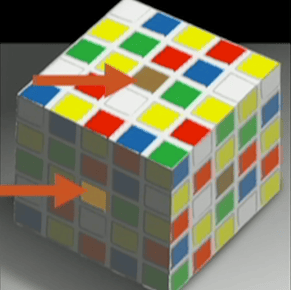
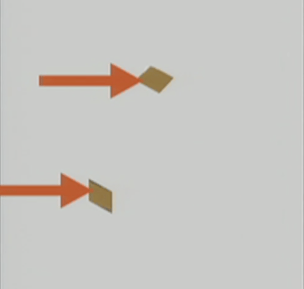
But when the other colors are removed, it’s clear that both colors are the same. Now that you know that you can surely see that the two colors are the same when you look back at them in comparison to the other colors, right? No. Your brain cannot separate the individual squares from those around them.
(I learned this from Dan Ariely’s 2008 TED Talk, Are we in control of our own decisions? which is definitely worth the watch!)
Visual perception is not the only thing the contrast effect can skew. A teacher might grade a mediocre essay more harshly after reading an outstanding essay. A 5’10’ tall man standing next to a man who is 6’6” will seem short but he appears tall standing next to a 5’0’ man. A reduced price looks much cheaper than it actually is only because the cancelled original price tag is still clearly visible. Or assume you just decided to buy a new suit. A smart salesperson might show you an expensive tie that goes nicely with the suit. Compared to the price of the suit, the tie does not seem too expensive, but without that comparison, you might not even consider buying such an expensive tie.
In recruiting and hiring, the contrast effect works exactly the same way. It’s human nature to assess candidates compared to others rather than taking the time to evaluate each candidate on their skills, expertise, and experience. The brain – in its attempt to efficiently move things from the inbox to the outbox – judges each candidate in comparison to those evaluated before and after. The result: weaker candidates may look stronger than they really are, and the person with the best qualifications may be overlooked.
There a two types of contrast effect:
Positive contrast effects. A positive contrast effect occurs when something is perceived as better than it would usually be perceived, because it’s compared to something worse. For example, people tend to feel more physically attractive after they look at pictures of people who are relatively unattractive.
Negative contrast effects. A negative contrast effect occurs when something is perceived as worse than it would usually be perceived, because it’s compared to something better. Students often feel less confident in their abilities when they’re in a class of high-performing students. This is an example of a related social phenomenon called the big-fish-little-pond effect (BFLPE).
How to Counter the Contrast Effect
To reduce the degree to which you are influenced by the contrast effect, you have to first identify it at work and then break the connection between what you’re trying to evaluate and the comparisons against it.
For example, if you’re trying to evaluate the price of a product, you want to separate it from the comparison products and judge it on its own selling points. There are a few ways to do this:
- Increase the time and space between the options.Don’t evaluate one choice right after another. Space them out.
- Add more options.A wider variety of choices can decrease the amount of contrast you notice between fewer choices.
- Identify the most important features, benefits, or characteristics to you. When you clearly define that, the irrelevant aspects become less compelling.
Obviously, if you’re the one doing the selling, understanding the contrast effect can give you a big advantage




